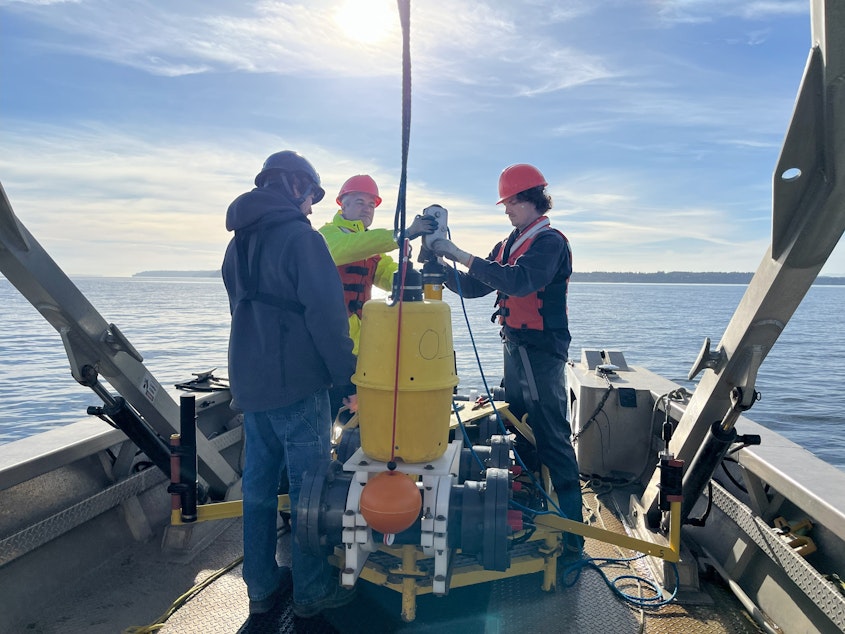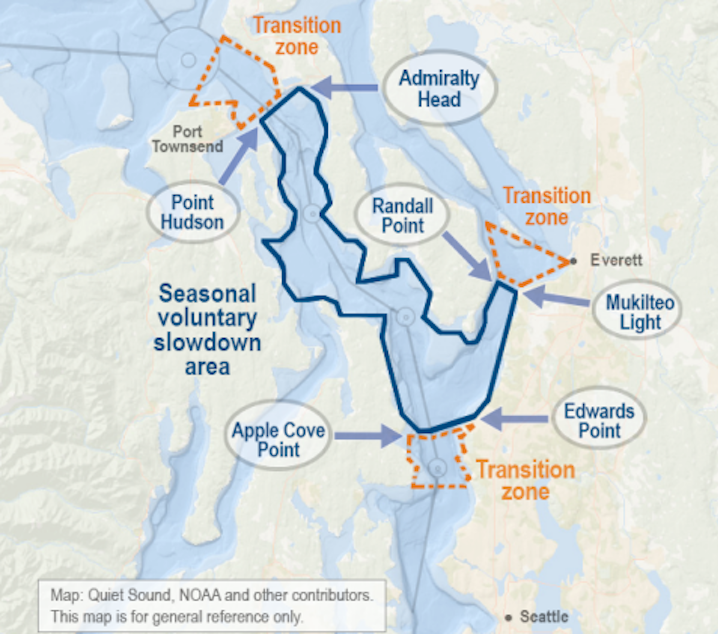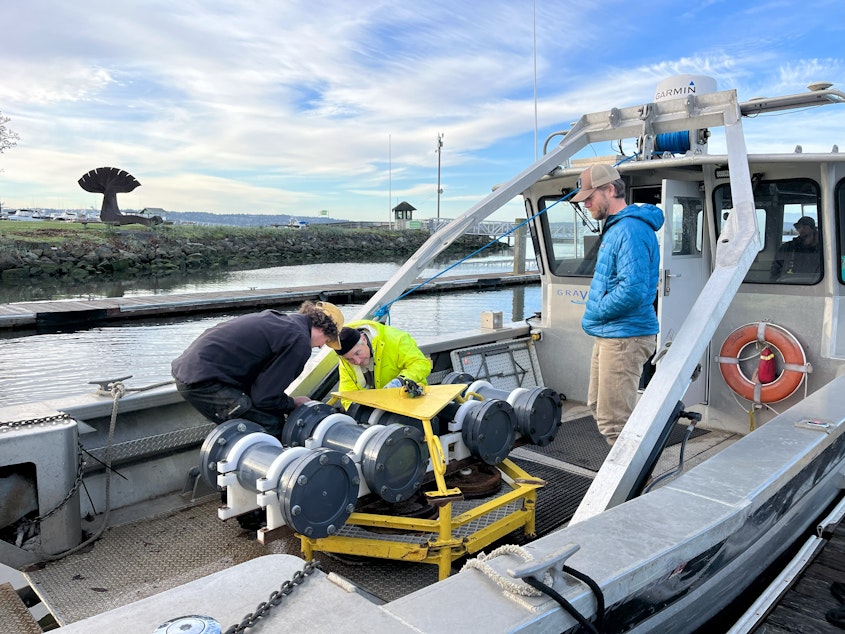It's getting quieter in Puget Sound and easier for orcas to find dinner

Orca conservation groups are thanking commercial ships and other big vessels for slowing down around endangered southern resident killer whales.
They are asking vessels to voluntarily reduce their speeds in a section of Puget Sound where orcas are often present. It’s a 22 nautical mile long stretch that reaches from Port Townsend to Edmonds and Everett. Researchers believe this area is where killer whales are most likely to spend their time when in Puget Sound.

Rachel Aronson is the director of Quiet Sound, the group that organized the slowdown. She says the propellers of large ships create a lot of noise.
“When the propeller spins, it creates teeny little bubbles, and the explosion and collapse of those bubbles is called cavitation, Aronson said. "That cavitation can be surprisingly loud in the frequencies that killer whales need to echolocate, and communicate.”
Organizers are asking large vessels to reduce their speeds by 30-50%. Container vessels, vehicle carriers, and cruise ships are asked to drop speeds to 14.5 knots, while tankers and bulkers are asked to slow to 11 knots in the slowdown area. Aronson said when vessels slow down to a target speed, it can reduce underwater noise pollution by 45%.
Sponsored
Aronson said reducing noise pollution in the Sound is crucial to orca survival. Orcas use echolocation to locate their prey and communicate with each other.
“We call orcas 'acoustic specialists.' They live underwater, they can't see as far as we can see on land. Sound is a much more important sense for them," Aronson said. “It helps me to think about sound pollution, like a thick fog that might block the whale from seeing with its hearing senses.”

Last year, Quiet Sound launched a trial of the slowdown. About 70% of vessels transiting through the slowdown area decreased their speed. This year 4% more boats dropped their speeds.
The slowdown period is slightly longer this year — Oct. 12, 2023, to Jan. 12, 2024. According to data from last year’s trial slowdown, underwater noise intensity was reduced by nearly half, about 3db.
Sponsored
Scientists plan to pull noise monitoring equipment out of Puget Sound in February to analyze this season’s data.




